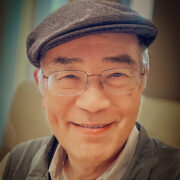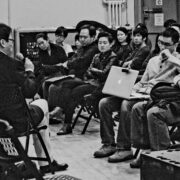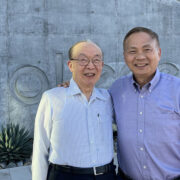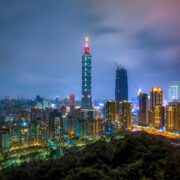Dynamic Tao and Its Manifestations
作者 王文隆

| It is exciting to witness what is happening. The world is marching toward a wonderful spiritual and material unification. Tao philosophers do not have to walk alone. Our understanding of our universe is still developing, but we have enough evidence to be joyful. It started with quantum mechanics and culminated with quantum cosmology. Within about 100 years, the physicists paved a smooth road for us to understand the ancient Tao philosophy. |
Quantum Theory and Cosmology
Einstein received a Nobel Prize for his work on photoelectric effects , because he resolved a paradox by observing that light energy is absorbed by atoms in quantized amounts and that a light wave behaves like a particle with energy and momentum. Niels Bohr proposed quantized energy levels for electrons in an atom. In 1926, Schrödinger proposed a wave equation to describe the hydrogen atom and, one year later, Heisenberg proposed the Uncertainty Principle. When electrons were shown to produce interference patterns like ripples of waves in diffraction experiments, we had to abandon the particle view as the only view of traditional physics. But, nothing in nature was changed. We changed and accepted the particle-wave duality. We have accepted the particle-wave duality and the uncertainty principle as nature. In spite of its seemingly contradictory nature, quantum theory became the most successful theory for our microscopic world. In 1905, Einstein proposed his revolutionary Special Theory of Relativity. We soon abandoned the absolute nature of space and time. Mass and dimensions change with the speed of an object. This mystery replaced many other mysteries. His General Theory of Relativity in 1916 dealt with the gravitational space-time phenomena of the universe. The theory predicted the formation of a black hole, which was then observed.
AuthorWayne L. Wang was born in Taiwan and migrated to the U.S. for his graduate studies in engineering and physics. In 1971, Dr. Wang received his Ph. D. degree from Massachusetts Institute of Technology. He did research as a theoretical physicist until 1975, publishing numerous papers on nuclear reaction theory. After spending five years on nuclear reactor safety research, he became a telecommunication engineer specializing in advanced mobile telecommunication systems and data communication. His cultural background spans equally both the Eastern and Western worlds. The similarities between Tao and quantum physics have attracted his early interest in Tao Philosophy. He believes that Tao is coherent and dynamic, and it may be systematically represented as a modern theory. With his background in the Chinese language and modern physics, he has been able to formulate a Tao philosophy in a most coherent and consistent manner. He introduces a scientific process to formulate Tao Philosophy in a language independent fashion. He has successfully translated the most difficult Chinese classic, the Laotzu Tao Te Ching, with minimum ambiguity. His first book on this subject, Dynamic Tao and Its Manifestations, shows the intimate similarities between Tao Philosophy and Quantum Cosmology. His analysis of Tao Philosophy will set a new framework for modern Tao studies, in both the Eastern and the Western arenas. |





